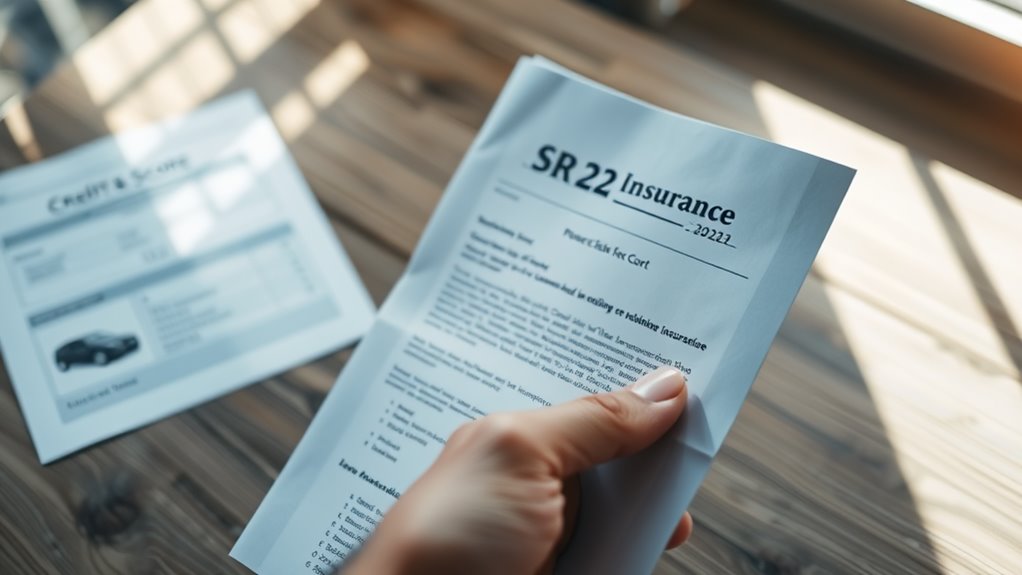Why Consider Other Options for High-Risk Drivers?
If you're classified as a high-risk driver, it's essential to explore various insurance options. Not all insurers view high-risk statuses the same way, which can lead to significant differences in rates and coverage. While some companies may charge exorbitant premiums, others offer competitive alternatives. Understanding these disparities can help you secure better terms. But how do you navigate the maze of options available to you? Let's examine effective strategies to find the best coverage.
When you're labeled as a high-risk driver, finding suitable auto insurance can feel overwhelming, especially since rates are typically higher due to the increased likelihood of accidents or claims. It's important to understand the factors that contribute to your high-risk status, as this knowledge can help you navigate the insurance landscape more effectively. Accidents, traffic violations, and even lack of driving experience can greatly impact your premiums and the options available to you.
Being labeled a high-risk driver can complicate finding affordable auto insurance, but understanding your status helps navigate options effectively.
One of the most significant aspects of being a high-risk driver is recognizing that not all insurance companies classify and insure high-risk drivers in the same way. While some may impose steep rates or even deny coverage altogether, others may offer competitive options tailored to your specific needs. Hence, researching different insurance providers is crucial. Look for insurers that have a reputation for working with high-risk drivers, such as Geico and Progressive, which may provide more affordable rates and options for SR-22 filings if required. Additionally, many insurers specialize in affordable SR-22 insurance options specifically designed for non-owners, which can be beneficial if you do not own a vehicle.
It's worth noting that maintaining a clean driving record is essential for improving your insurance situation over time. At-fault accidents can linger on your record for up to five years, while traffic violations like speeding tickets can hang around for three to five years, depending on your state. If you've faced severe infractions such as DUIs, you'll find that compliance with SR-22 filings becomes imperative. This form proves you meet minimum liability coverage requirements, but not all insurance companies handle SR-22 filings. Consequently, identifying an appropriate provider is important to maintain legal driving status. Auto insurance is attainable for high-risk drivers, and knowing this can empower you in your search for coverage.
When considering your options, you shouldn't just focus on the price of premiums. Instead, it's important to compare coverage and service quality among different insurers. Some companies might prioritize customer service and a variety of coverage options over competitive pricing, so it's vital to evaluate what matters most to you. Discounts can be a game-changer for high-risk drivers, and companies like Geico and Progressive often offer incentives that can greatly reduce your premiums.
Don't overlook the importance of customer reviews and ratings, as they can provide insight into the insurer's reputation and service quality. Additionally, working with independent brokers can be beneficial. They often have access to multiple companies and can help you find the best coverage tailored to your high-risk status. Online tools and resources can also simplify the comparison process, allowing you to assess various options quickly.
Ultimately, while being labeled a high-risk driver can seem challenging, proactive research and a strategic approach can yield better insurance outcomes. By understanding your unique circumstances and exploring the right options, you can find coverage that meets your needs without breaking the bank. The key is to remain diligent and informed in your search for suitable high-risk auto insurance.
Conclusion
Maneuvering insurance as a high-risk driver can feel like steering through a maze; one wrong turn might lead to dead ends or higher costs. However, by exploring various options, you can find the right path. For instance, many drivers have saved hundreds by switching from traditional insurers to companies like Geico or Progressive. Don't settle for the first quote you receive—take the time to compare rates and coverage, and you might just discover a clearer route to better insurance.



